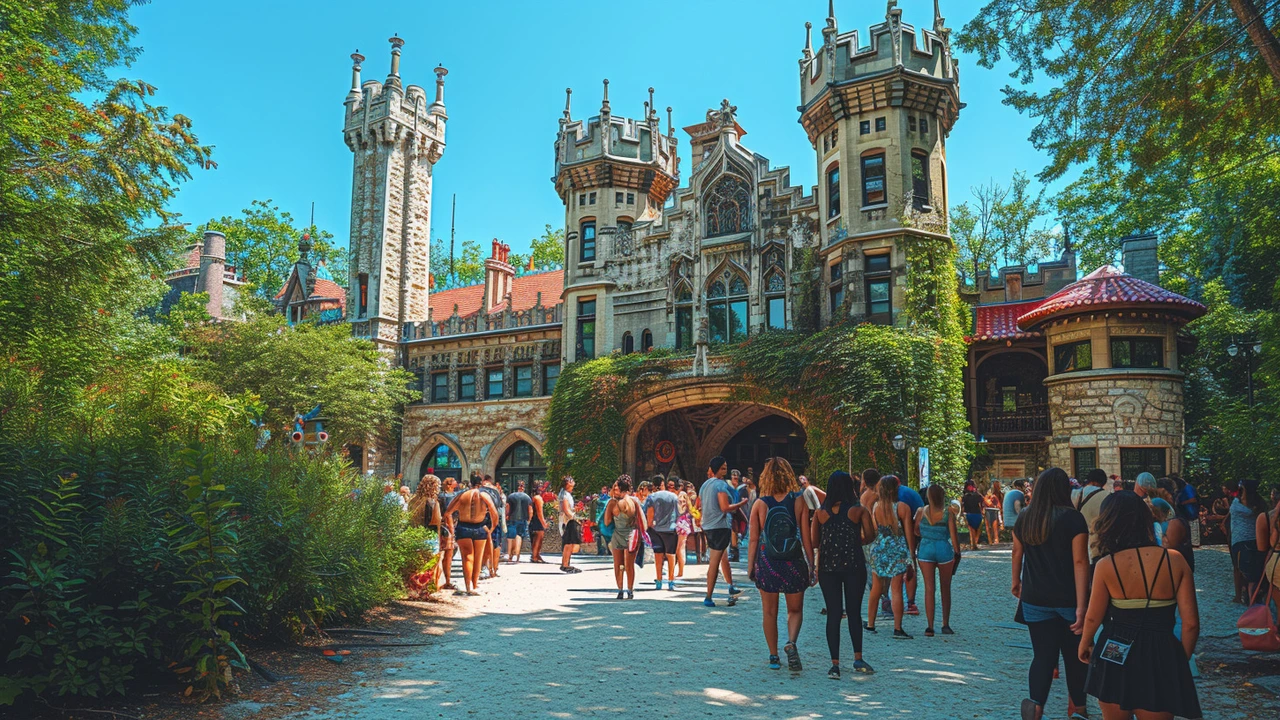Hey there, architecture enthusiasts! So, we've been traipsing around the grand world of Gothic Revival architecture - boy, what an adventure it's been! Imagine, a style that's all about drama, with its pointed arches, intricate details, and soaring spires, kind of like the architectural equivalent of a moody teenage poet. But don't be fooled, it's not all gloom and doom. It's about expressing grandeur and spirituality, like a cathedral on a sugar rush. So, buckle up, folks, as we continue to marvel at these architectural wonders that make you say "Wow!" and "How the heck did they build that?!" all at the same time!
Grandeur in Architecture: Styles That Stop You in Your Tracks
Ever walked up to a building and felt small? That feeling is architectural grandeur. It appears as bold columns, soaring domes, lavish decoration, or sheer scale. This page brings together styles and examples that create that wow effect so you can learn to recognize what makes a place feel monumental.
Grand design is more than size. It balances proportion, detail, and material to send a clear message. Roman engineers used arches and concrete to shape vast public spaces. Renaissance architects tuned symmetry and geometry for calm authority. Beaux-Arts designers layered sculpture, grand stairs, and façades to celebrate civic pride. Baroque architects piled curves, light, and ornament to dramatize movement and emotion. Each approach uses a different toolkit but aims for the same outcome: a strong response from people who arrive.
Why care about grandeur? Because these choices shape how we act in a place. A courthouse built with classical order can feel stable and trustworthy. A museum with a majestic entrance can make a visit feel like a ceremony. Even everyday hubs like stations and markets can feel memorable when designers treat circulation, volume, and light as theater. Learning the hallmarks of grandeur helps you read cities and make smarter design choices at home or work.
Key features to notice:
Look for rhythm and repetition, a clear base-middle-top arrangement, and carefully chosen materials. Look for repeated columns or pilasters, rhythmic window patterns, and a crown or cornice that finishes the composition. Materials tell stories: carved stone and bronze age visibly; glass and steel speak of speed and modernity. Light matters a lot—skylights, clerestories, and strong shadows shape mood and highlight detail.
How grand styles differ:
Greek Revival borrows temple forms and strong columns to project permanence. Georgian favors symmetry and restrained decoration for refined dignity. Colonial styles fuse local craft with imported forms, creating regional expressions of grandeur. Neo-Futurism and High-Tech use exposed structure, engineering bravado, and shiny materials to create a forward-looking monument. Constructivist work plays with geometry and bold shapes to make political statements through form.
Quick practical tips: pick one dominant idea—scale, light, or ornament—and make every design decision support it. Overloading a project with competing grand gestures usually weakens the effect. For renovation projects, preserve defining elements like stair halls, entrances, and original cornices; these often carry the most presence. If you want grandeur on a budget, invest in quality at eye level: doors, lobbies, and key finishes will shape first impressions.
Try sketching a single grand axis or entry sequence before choosing materials and ornament to keep the design focused and memorable.
Want detailed examples? See the linked articles on this tag for focused reads: Beaux-Arts, Renaissance and Roman methods, Greek Revival, Baroque, Georgian, Colonial stories, and modern movements like High-Tech and Neo-Futurism. Each post breaks down the design moves and shows how they create that unforgettable sense of scale and importance.
Grandeur is a tool. Used well, it makes places people respect, remember, and return to.

